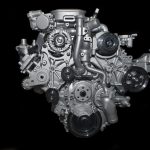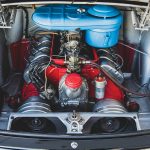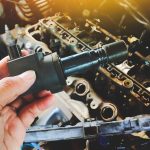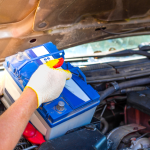Performing DIY engine maintenance can be a rewarding experience. Many car enthusiasts enjoy the process of working on their own vehicles, taking pride in doing their own repairs, and saving money in the process. However, DIY engine maintenance comes with its own set of challenges. It requires knowledge, the right tools, and attention to detail. Unfortunately, even seasoned DIYers can make mistakes that can damage their engine or lead to costly repairs. In this article, we’ll look at the most common mistakes made during DIY engine maintenance and how you can avoid them.
The Importance of Proper DIY Engine Maintenance
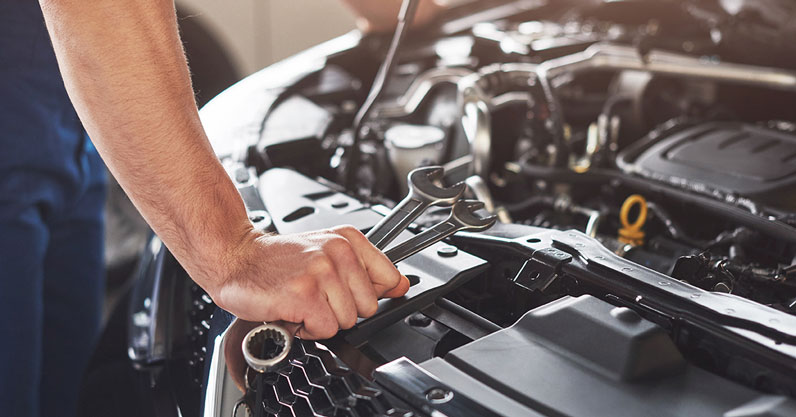
When done correctly, DIY engine maintenance can help prolong the life of your vehicle and improve its performance. Routine tasks like changing the oil, replacing spark plugs, and checking belts can make a significant difference in the engine’s overall health. However, it’s essential to approach DIY engine maintenance with a thorough understanding of the process and respect for the complexity of the engine.
One of the benefits of DIY engine maintenance is that you can tailor your work to your vehicle’s specific needs. By getting hands-on with your car, you’ll gain a better understanding of how it functions, which can help you diagnose issues early on. But without the proper techniques and knowledge, mistakes can be costly. It’s important to approach every task with care and to avoid the common pitfalls that many DIYers fall into.
Not Using the Right Tools for DIY Engine Maintenance
One of the most common mistakes during DIY engine maintenance is not using the right tools for the job. Every engine component has its own set of specialized tools, and using the wrong ones can lead to damage. For example, attempting to remove spark plugs with an ordinary wrench rather than a spark plug socket can strip the threads or crack the plug.
DIY engine maintenance requires investing in the proper tools, including torque wrenches, specialized sockets, and feeler gauges. These tools ensure that components are tightened or adjusted to the correct specifications, which is crucial to prevent parts from being over-tightened or under-tightened. Using the wrong tools not only risks damage to the parts but can also make the task more difficult and time-consuming.
Additionally, working without proper safety gear can put you at risk. Gloves, safety glasses, and protective clothing are essential when working on an engine to prevent injuries from burns, chemical spills, or flying debris. Skipping these protective measures is a common mistake that should be avoided at all costs.
Overlooking the Importance of the Owner’s Manual
The owner’s manual is often an underutilized resource during DIY engine maintenance. It provides crucial information about your vehicle’s specific needs, including the correct fluids to use, the torque settings for bolts, and the intervals for replacing parts. Ignoring the owner’s manual can lead to incorrect maintenance, such as using the wrong oil or installing parts incorrectly.
Many DIYers skip over the manual and rely on general knowledge or online tutorials, but this can lead to mistakes. Every vehicle is different, and what works for one engine may not work for another. Referring to the manual ensures that you’re following the manufacturer’s recommendations, which helps preserve the engine’s performance and longevity.
Failing to Keep the Engine Clean During Maintenance
Keeping the engine clean during DIY engine maintenance is crucial, but it’s a step that is often overlooked. Engines accumulate dirt, grease, and debris over time, and working on a dirty engine increases the chances of contamination. Dirt and debris can enter sensitive areas like the fuel injectors, carburetor, or cylinder head, causing problems that can affect engine performance.
Before starting any DIY engine maintenance, take the time to clean the engine bay. A clean workspace reduces the risk of introducing foreign particles into the engine and makes it easier to see what you’re working on. Additionally, cleaning the engine can help you identify any leaks or worn components that might need attention during your maintenance routine.
Not Checking Fluids Properly During DIY Engine Maintenance
Fluids are the lifeblood of your engine, and one of the most common mistakes during DIY engine maintenance is not checking or changing them correctly. Engine oil, coolant, brake fluid, and transmission fluid all play a vital role in keeping your car running smoothly. However, many DIYers either forget to check these fluids or fail to follow the proper procedure.
When checking fluids during DIY engine maintenance, it’s important to do so at the right time and under the right conditions. For example, engine oil should be checked when the engine is warm but not hot, and the vehicle should be on a level surface to get an accurate reading. Similarly, coolant levels should be checked when the engine is cool to avoid burns from hot steam.
Another mistake is using the wrong type of fluid. Modern vehicles require specific types of oil, coolant, and transmission fluid, and using the wrong type can lead to poor engine performance or even damage. Always consult the owner’s manual to ensure you’re using the correct fluids for your vehicle.
Over-Tightening Bolts and Components
During DIY engine maintenance, over-tightening bolts and components is a common mistake, especially for those new to working on engines. While it may seem like tightening a bolt as much as possible is a good idea, over-tightening can actually strip threads, damage parts, or cause components to crack.
Using a torque wrench is essential during DIY engine maintenance to ensure bolts are tightened to the manufacturer’s recommended specifications. The owner’s manual will provide the correct torque values, which prevents both under-tightening and over-tightening. Over-tightening can be particularly damaging to engine components like spark plugs, cylinder head bolts, and oil pan drain plugs, all of which need to be handled with care.
Ignoring Warning Signs and Skipping Diagnostics
DIY engine maintenance isn’t just about replacing parts and changing fluids; it also involves diagnosing issues before they turn into serious problems. Many DIYers make the mistake of ignoring warning signs, such as unusual noises, smoke, or dashboard warning lights, thinking they can fix the problem later.
Ignoring these warning signs can lead to major engine damage and costly repairs. Part of effective DIY engine maintenance is knowing when to stop and investigate an issue rather than proceeding with routine maintenance as if nothing is wrong. For example, a knocking sound from the engine might indicate a more serious problem like a failing rod bearing, which requires immediate attention.
Taking the time to run diagnostics before starting any maintenance can save you from making repairs that might be unnecessary or damaging. If you’re unsure of what a particular issue means, it’s better to consult a professional than to continue with DIY engine maintenance without a proper diagnosis.
Using Cheap or Low-Quality Parts
Another common mistake during DIY engine maintenance is using cheap or low-quality parts. While saving money is often the goal of DIY maintenance, cutting corners on parts can lead to more significant expenses down the road. Cheap parts may wear out quickly, fit poorly, or even cause damage to the engine.
When it comes to engine components like filters, spark plugs, and belts, quality matters. Always opt for OEM (original equipment manufacturer) parts or high-quality aftermarket parts from reputable brands. Using inferior parts can lead to poor performance, reduced fuel efficiency, and the need for more frequent repairs, which negates the savings from DIY maintenance.
Skipping Routine Maintenance Steps
DIY engine maintenance can be time-consuming, and it’s easy to skip steps to save time. However, skipping routine maintenance steps can lead to bigger problems. For example, forgetting to change the oil filter when performing an oil change or not replacing worn-out gaskets can cause leaks and poor engine performance.
Routine maintenance is essential for keeping your engine running smoothly, and cutting corners can have long-term effects. Following the full maintenance routine for each task ensures that every component is cared for properly and that the engine remains in optimal condition.
Conclusion
DIY engine maintenance can be a rewarding way to care for your vehicle, but it comes with its risks. By avoiding common mistakes like using the wrong tools, ignoring the owner’s manual, and over-tightening components, you can ensure that your DIY engine maintenance is effective and safe. Proper attention to detail, using quality parts, and staying informed about your vehicle’s needs will help you keep your engine running smoothly for years to come.




